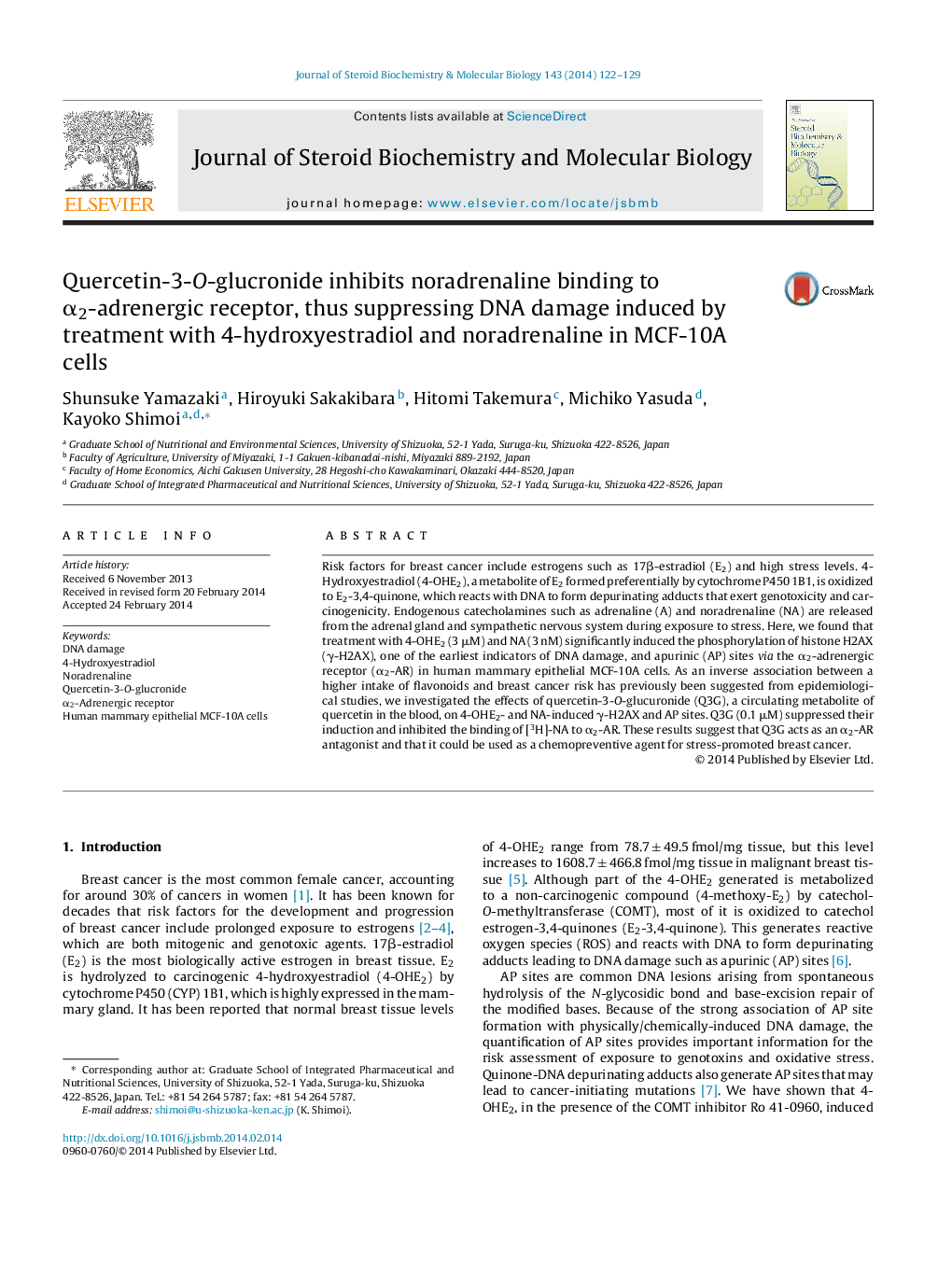| Article ID | Journal | Published Year | Pages | File Type |
|---|---|---|---|---|
| 8338676 | The Journal of Steroid Biochemistry and Molecular Biology | 2014 | 8 Pages |
Abstract
Risk factors for breast cancer include estrogens such as 17β-estradiol (E2) and high stress levels. 4-Hydroxyestradiol (4-OHE2), a metabolite of E2 formed preferentially by cytochrome P450 1B1, is oxidized to E2-3,4-quinone, which reacts with DNA to form depurinating adducts that exert genotoxicity and carcinogenicity. Endogenous catecholamines such as adrenaline (A) and noradrenaline (NA) are released from the adrenal gland and sympathetic nervous system during exposure to stress. Here, we found that treatment with 4-OHE2 (3 μM) and NA (3 nM) significantly induced the phosphorylation of histone H2AX (γ-H2AX), one of the earliest indicators of DNA damage, and apurinic (AP) sites via the α2-adrenergic receptor (α2-AR) in human mammary epithelial MCF-10A cells. As an inverse association between a higher intake of flavonoids and breast cancer risk has previously been suggested from epidemiological studies, we investigated the effects of quercetin-3-O-glucuronide (Q3G), a circulating metabolite of quercetin in the blood, on 4-OHE2- and NA-induced γ-H2AX and AP sites. Q3G (0.1 μM) suppressed their induction and inhibited the binding of [3H]-NA to α2-AR. These results suggest that Q3G acts as an α2-AR antagonist and that it could be used as a chemopreventive agent for stress-promoted breast cancer.
Related Topics
Life Sciences
Biochemistry, Genetics and Molecular Biology
Biochemistry
Authors
Shunsuke Yamazaki, Hiroyuki Sakakibara, Hitomi Takemura, Michiko Yasuda, Kayoko Shimoi,
